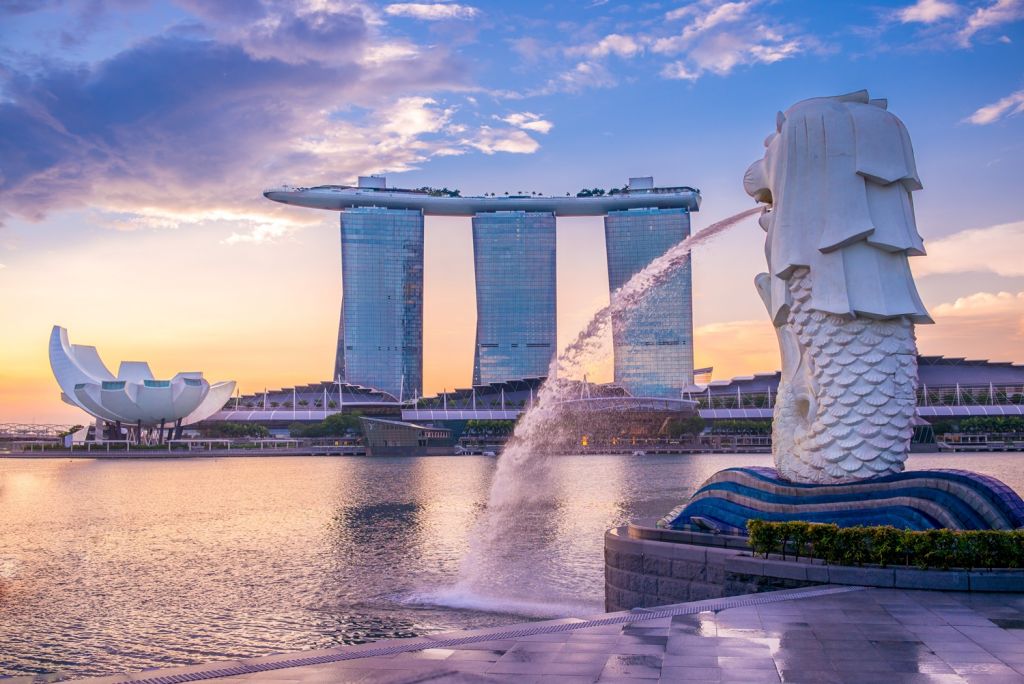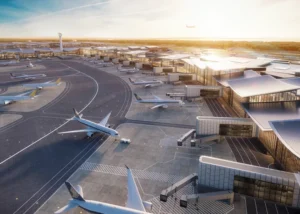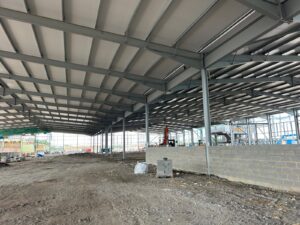Many countries in Asia are facing a severe water crisis. Rapid population growth and urbanisation have significantly outpaced water infrastructure development, with projections indicating that urban water demand will rise by 50–80% over the next three decades.1 This problem is further exacerbated by inefficient water management and over-reliance on dwindling groundwater in Asian megacities, often leading to an extensive cone of depression in the groundwater below. This increases the cost of abstraction to water quality degradation and causes significant infrastructure damage due to land subsidence and flooding.2 To relieve said stressors, experts have considered several interwoven solutions, with rainwater harvesting emerging as one key option to alleviate the pressure on groundwater and help ensure a sustainable future for water resources management.3
Climate Extremes and Urban Water Stress
Water scarcity in Asian cities is inextricably linked to the region’s climate patterns, with uneven rainfall distribution leading to periodic flooding during the wet season and droughts in dry months.4 Recent research demonstrates that extreme precipitation events in the Asia–Pacific region are increasing in frequency, affecting about 60% of the population.5 These patterns are closely linked to the El Niño–Southern Oscillation (ENSO) cycle, which can conversely exacerbate the severity of droughts and high precipitation events, the latter of which almost sardonically compromises water supplies courtesy of contamination by raw sewage, leaked toxic chemicals, and runoff from hazardous waste sites and factory farms, thereby wreaking exponential increases in eye ear, skin, and gastrointestinal infections.6 Climate change has amplified this issue, with model simulations predicting more frequent and intense episodes of torrential rain over East Asia as global temperatures rise. Future projections (2080–2099) of annual and seasonal changes based on an assessment of East Asian atmospheric river (AR) and AR-related precipitation estimates that the annual average integrated vapour transport (IVT) in East Asia in 2080–2099 will increase by approximately 32.5% compared to 1995–2014, while the annual average AR frequency (FAR) will increase by approximately 111% by the late 21st century, wreaking a devastating impact on coastal areas and cities across the world and Asia, in particular.7
Rainwater Harvesting as Part of a Broader Water Strategy

Needless to say, preventative strategies such as renewable energy are almost universally viewed as a more sustainable solution to these concerns than protective strategies. However, given current policy gaps and the fact that many of the already-realised effects of climate change on precipitation events are commonly seen as irreversible, the importance of a protective strategy should not be minimised.8 Rainwater harvesting (RWH) systems, which capture rainwater from rooftops or other surfaces for both potable uses, such as drinking water, and non-potable purposes, such as toilet flushing, irrigation, and cooling, have emerged here as a potentially viable solution.9 Moreover, the fact that quality can be improved and maintained with the aid of modern-day filtration systems means microbial contamination historically associated with RWH systems can be more readily prevented.10 Furthermore, RWH systems can help restore groundwater levels in Asian cities by not only relieving pressure on municipal supplies but also channelling excess rainwater into recharge wells and other artificial structures, allowing it to percolate into aquifers and replenish depleted groundwater.11
None of this will come as news to rural communities in southern and southeastern Asian countries, where rainwater harvesting systems have been utilised for centuries. To provide just two of countless examples, ancient underground tankas have long been a staple in Rajasthan for storing rainwater, while in China, water cellars have served as a principal source of potable water in semi-arid regions for centuries.12 By a similar token, none of this will come as news to those policymakers who have embraced RWH in urban planning for decades. The Tamil Nadu government serves as a stark case in point here, having implemented a mandatory ordinance as early as 2003 requiring all buildings to install RWH structures, even if enforcement remains sporadic.13 Likewise, the inclusion of rainwater harvesting guidelines in the Bangladesh National Building Code (BNBC), mandates in major cities like Bengaluru, Delhi, and Chennai, and initiatives such as China’s “sponge city” initiative—which integrates permeable pavements, green roofs, and rainwater storage in cities such as Wuhan, Chongqing, and Xiamen—reflect a growing institutional acceptance of RWH systems.14 Certainly, all of these measures highlight a consensus as to the fact that RWH can provide reliable alternatives to overstressed municipal water supplies and reduce the risk of localised flooding, thereby improving overall urban climate resilience.

Strengthening Urban Water Security Through Rainwater Harvesting
Again, it cannot be stressed enough that rainwater harvesting alone will not serve as a panacea for Asia’s chronic water shortages. Nevertheless, as a decentralised, cost-effective solution that enables individual buildings and communities to reduce their dependence on municipal supplies, rainwater harvesting clearly represents a crucial component of a broader, integrated water management strategy. By capturing and utilising rain where it falls, RWH systems not only alleviate pressure on overburdened infrastructure but also reduce the energy required for centralised water pumping and treatment, easing the strain on rivers and aquifers. Combined with complementary measures such as wastewater recycling, demand management strategies, and flood control infrastructure, these capabilities can significantly enhance the overall resilience of megacities, helping them adapt to increasingly unpredictable water availability while mitigating drought and flood risks.
For information on how Capcon Engineering can support your urban planning needs with effective rainwater harvesting solutions, contact us at info@capconeng.com. For tender enquiries, email projects@capconeng.com or submit a request through our tender enquiries form. If you prefer to speak with us directly, call our Ireland office at +3531 651 0302, our UK office at +44 1 494 411 076, or our Malaysia office at +60 3 2935 9108.
Written By
Meet Julia Cavanaugh
Sustainability & Technical Design Engineer

References
- Chunyang He et al., “Future Global Urban Water Scarcity and Potential Solutions,” Nature Communications 12, no. 4z667 (2021), https://doi.org/10.1038/s41467-021-25026-3. ↩︎
- Food and Agriculture Organization of the United Nations and Australian Water Partnership. Managing Water Scarcity in Asia and the Pacific: A Summary—Trends, Experiences, and Recommendations for a Resilient Future. Rome and Canberra, 2023. Page 8. https://doi.org/10.4060/cc6083en. ↩︎
- Samia Richards et al., “Sustainable Water Resources through Harvesting Rainwater and the Effectiveness of a Low-Cost Water Treatment,” Journal of Environmental Management 286 (May 15, 2021): 112223, https://doi.org/10.1016/j.jenvman.2021.112223. ↩︎
- See Express News Service, “Mumbai Records Wettest Monsoon in 3 Years; Weathermen Predict Only Light Rain Ahead,” The Indian Express, September 28, 2024, https://indianexpress.com/article/cities/mumbai/mumbai-wettest-monsoon-weathermen-predict-light-rain-9593062/; Al Jazeera, “Indonesia Uses Cloud Seeding to Stop Heavy Rains as Floods Hit Jakarta,” Al Jazeera, March 5, 2025, https://www.aljazeera.com/gallery/2025/3/5/indonesia-uses-cloud-seeding-to-stop-heavy-rains-as-floods-hit-jakarta#:~:text=Jakarta%2C%20a%20low%2Dlying%20city,70%20people%20and%20displacing%20thousands; “Govt Launches Drive to Restore 19 Dhaka Canals Before Monsoon,” The Business Standard, February 2, 2025, https://www.tbsnews.net/bangladesh/environment/govt-launches-drive-restore-19-dhaka-canals-monsoon-1058481. ↩︎
- Dong An et al., “Extreme Precipitation Patterns in the Asia–Pacific Region and Its Correlation with El Niño-Southern Oscillation (ENSO),” Scientific Reports 13, no. 11068 (2023), https://doi.org/10.1038/s41598-023-38317-0. ↩︎
- Dong An et al., “Extreme Precipitation Patterns in the Asia–Pacific Region and Its Correlation with El Niño-Southern Oscillation (ENSO),” Scientific Reports 13, no. 11068 (2023), https://doi.org/10.1038/s41598-023-38317-0; Melissa Denchak, “Flooding and Climate Change: Everything You Need to Know,” Natural Resources Defense Council, November 3, 2023, https://www.nrdc.org/stories/flooding-and-climate-change-everything-you-need-know#facts. ↩︎
- See Tae-Jun Kim, Jinwon Kim, Jin-Uk Kim, Chu-Yong Chung, and Young-Hwa Byun. “Impacts of Climate Change on Atmospheric Rivers over East Asia.” Asia-Pacific Journal of Atmospheric Sciences 60 (2024): 639–654. https://link.springer.com/article/10.1007/s13143-024-00372-6; Ou Wang et al., “Projected Future Changes in Extreme Precipitation Over China Under Stratospheric Aerosol Intervention in the UKESM1 Climate Model,” Atmospheric Chemistry and Physics 24, no. 21 (2024): 12355–12373, https://doi.org/10.5194/acp-24-12355-2024; Owen Mulhern, “Sea Level Rise Projection Map – Tokyo,” Earth.Org, July 27, 2020, https://earth.org/data_visualization/sea-level-rise-by-the-end-of-the-century-tokyo/; “Climate Change Country Profile: Philippines,” Climate Centre, 2024, Page 3. https://www.climatecentre.org/wp-content/uploads/RCCC-Country-profiles-Philippines_2024_final.pdf.
↩︎ - Intergovernmental Panel on Climate Change (IPCC), “Climate change widespread, rapid, and intensifying – IPCC,” IPCC, August 9, 2021, https://www.ipcc.ch/2021/08/09/ar6-wg1-20210809-pr/. ↩︎
- See M. Martínez Euklidiadas, “How can cities benefit from rainwater harvesting,” Tomorrow.City, July 22, 2024, https://www.tomorrow.city/how-can-cities-benefit-from-rainwater-harvesting/. ↩︎
- See A. H. M. Shofiul Islam Molla Jamal et al., “Development of a Fabricated First-Flush Rainwater Harvested Technology to Meet Up the Freshwater Scarcity in a South Asian Megacity, Dhaka, Bangladesh,” Heliyon 9, no. 1 (January 2023): e13027, https://doi.org/10.1016/j.heliyon.2023.e13027; ↩︎
- See Renier Dale D. Dalawampu et al., “Reduction of Contamination from Water Using Rainwater Filtration System in NCR, Philippines,” Proceedings of the International Conference on Industrial Engineering and Operations Management (Nsukka, Nigeria: IEOM Society International, April 5-7, 2022), 1154–1165, https://ieomsociety.org/proceedings/2022nigeria/204.pdf. ↩︎
- See Road Water Harvesting for Surface Storage, Roads for Water, accessed March 18, 2025, https://roadsforwater.org/guideline/roads-and-rural-water-supply/road-water-harvesting-for-surface-storage/; Weinan Zhou, Kunihiko Matsumoto, and Masanori Sawaki, “Understanding the Traditional Wisdom of Harvesting Rainwater in Household Yards: Construction and Rainwater Usage Patterns of Settlement Water Cellars in Semi-Arid China,” Journal of Asian Architecture and Building Engineering 22, no. 2 (2023): 589–601, https://doi.org/10.1080/13467581.2022.2047980; ↩︎
- “Ensure Proper Enforcement of Compulsory Rainwater Harvesting Order, Says HC,” The Times of India, August 26, 2018, https://timesofindia.indiatimes.com/city/chennai/ensure-proper-enforcement-of-compulsory-rainwater-harvesting-order-says-hc/articleshow/65545721.cms. ↩︎
- Bangladesh National Building Code (BNBC) 2015: Final Draft, Volume 1 (Part 1 to Part 5) (Dhaka: Housing and Building Research Institute, 2015), https://rise.esmap.org/data/files/library/bangladesh/Energy%20Efficiency/Bangladesh_National%20Building%20Code.pdf; Faiza Chikhi, Chuangcheng Li, Qunfeng Ji, and Xilin Zhou, “Review of Sponge City Implementation in China: Performance and Policy,” Water Science & Technology 88, no. 10 (2023): 2499–2520, https://doi.org/10.2166/wst.2023.312; Mehak Puri and Vivek Kumar Sah, “Are Indian Megacities Forgetting Their Rainwater Endowment?” Down to Earth, May 8, 2024, https://www.downtoearth.org.in/water/are-indian-megacities-forgetting-their-rainwater-endowment–96036. ↩︎







